Journal of Environmental Protection
Vol.3 No.11(2012), Article ID:25014,13 pages DOI:10.4236/jep.2012.311165
Waste Research Trends in Japan in the Past Ten Years: Review of What We Had Done before the Catastrophic Events of March 2011
![]()
School of Engineering, Toyama Prefectural University, Imizu, Japan.
Email: tateda@pu-toyama.ac.jp
Received June 19th, 2012; revised July 25th, 2012; accepted September 4th, 2012
Keywords: Waste Research; Conference Proceedings; Research Trends; Disaster; Waste
ABSTRACT
This study analyzes waste research of the past decade in order to determine Japanese trends as well as to learn the problems of Japanese research. The results show that waste research has focused mainly on treatment, management, and recycling, and that research on prior processes such as reduction, collection, and transportation has been very limited. It was also found that research placed stress mostly on materials rather than people and the trend was very similar to that of a ministry oriented research fund. It seems that Japanese waste research has been neither balanced nor strategic. We therefore conclude that a government direction on waste studies might be not appropriate. Japan and Japanese researchers must change their ways of thinking in order not to repeat these mistakes.
1. Introduction
Since the tragic earthquake and tsunami destroyed areas along Japan’s northeast shore on March 11, 2011, Japan has faced a tremendous amount of disaster and radiation waste. According to the Eco Report [1], the earthquake and tsunami generated approximately 25 million tons of general waste (described later), which is equivalent to half the amount of waste generated annually Japan in its entirety. The question remains: Do the Japanese have sufficient knowledge, technology, and experience to deal with disaster and radiation waste? Do they have the proper training, skill, and ability for effective waste treatment? What waste topics have they been studying? What is the current status of waste treatment in Japan? After observing the sluggish, improper actions and decisions of the central government, ministries, and academic professions, it is easy to see that sufficient research related to the treatment and management of disaster and radiation waste has not been performed.
The purpose of this study is to determine what we, Japanese researchers, have studied and what research has been performed on waste in the past ten years. Moreover, we want to determine what factors influenced the formation of the research trend. By reflecting on what we have done after and what we have learned from the catastrophic events of 2011, we will be able to learn what kinds of preparation and strategies can address the problems and events related to waste treatment in a more efficient and effective way. Complete bibliometric analysis of world research on waste was conducted by Fu et al. [2] In contrast to that study, this study was focused on the trend of domestic research on waste in Japan. In view of the sluggishness in the treatment of radioactive and other waste generated by the tsunami, Japanese waste management experts have to know what we have done in terms of waste research by reconsidering the agenda of country protection, which we often take very lightly.
2. Method of Analysis
2.1. Conference Proceedings Used for Analysis
The proceedings of annual conferences of two major associations of waste in the 2001-2011 fiscal years (April-March) were used for analysis [3-24]. One association was Japan Society of Material Cycles and Waste Management, and the other was Japan Waste Management Association. The former was established in 1990, consists mainly of academic researchers and students (its total number of members including companies was 3147 as of August 2011), and deals mainly with industrial waste research. Its annual conference is usually held in November. The latter was established in 1947; its members are mainly local governments (its total number of member including academic researchers totaled 739 as of November 2011), and it deals mainly with general waste research. Its annual conference is usually held in January, which means that its conference is held late in the fiscal year.
Waste is classified into two groups according to Japan Waste Management Law (Figure 1). Industrial waste is described as waste based on PPP (polluter pay principle) and is mainly waste resulting from business activity. General waste is described as waste for which local governments are responsible, and is generated mainly by residents. The annual amounts generated by these two groups were approximately 400 million tons and 50 million tons, respectively. Peer-reviewed journal papers were not included for this trend analysis because those papers usually take time from submission to publication and the preliminary data are normally presented in such those conferences. Moreover, all conference proceedings are not in public as peer-reviewed papers in journals. We believe that conference proceedings better reflect what is going on in the field, because there, researchers were able to freely present their research to the public.
2.2. Classification of Research
All oral and poster presentations at the two conferences for each fiscal year were classified into 25 groups, described in Table 1.
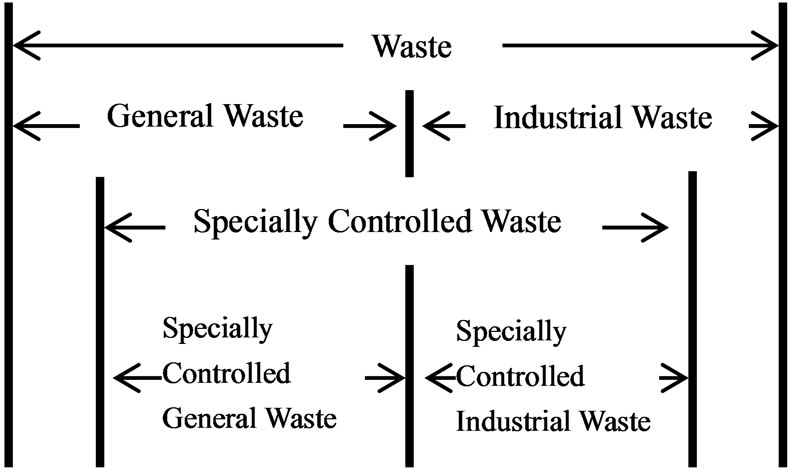
Fugire 1. Legal classification of waste in Japan.
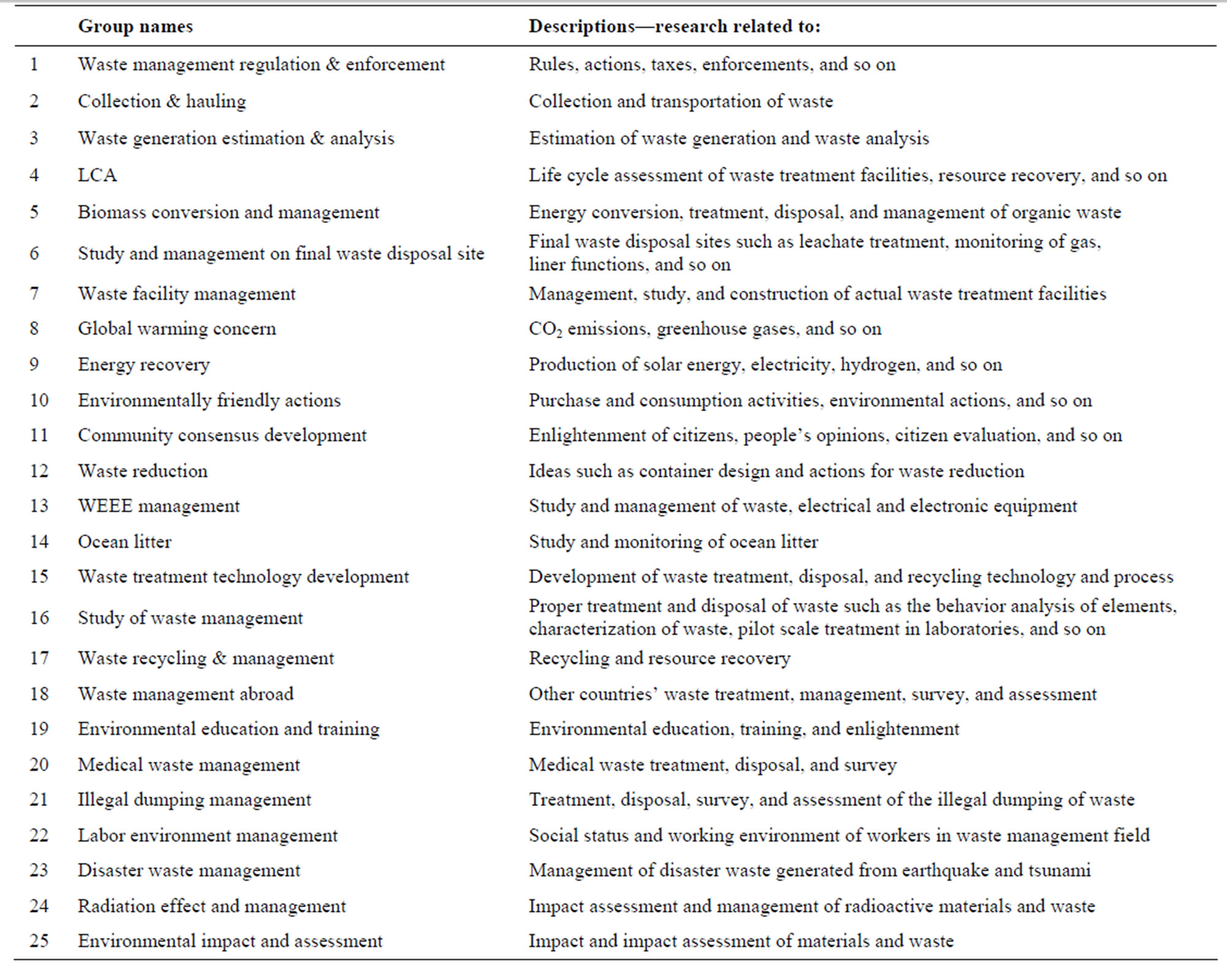
Table 1. Descriptions of 25 groupings.
The number of proceedings by Japan Society of Material Cycles and Waste Management and the Japan Waste Management Association analyzed here was, respectively, 383 and 140 in FY2001, 405 and 138 in FY2002, 428 and 129 in FY2003, 507 and 111 in FY2004, 422 and 102 in FY2005, 404 and 88 in FY2006, 320 and 87 in FY2007, 289 and 89 in FY2008, 287 and 93 in 2009, 305 and 101 in 2010, and 273 and 102 in 2011. Presentations in the international sessions of Japan Society of Material Cycles and Waste Management were excluded from this analysis.
2.3. Analysis of Allocation Trend of a Research Fund Orientated by Ministry of Environment
A research fund for the Establishment of a Sound Material-cycle Society and the Next-generation Waste Treatment Technology (technical development regarding appropriate disposal of waste materials and establishment of a recycling-oriented society), a part of the Environment Research and Technology Development Fund, was analyzed for determining its allocation trend. The analysis period was from FY2000 to current year (Ministry of Environment) [25-36]. The fund was orientated by Ministry of Environment and was allocated to researches that facilitated decision making in matters pertaining to the environmental policies of Japan.
3. Results and Discussion
3.1. Trends of Number of Proceedings by Fiscal Year
The number of proceedings has decreased in the last ten years, both for Japan Society of Material Cycles and Waste Management and the Japan Waste Management Association (Figure 2). The decreasing rates from FY2001 to FY2011 were almost the same for both groups, and were about 30%. However, unlike the Japan Waste Management Association, for Japan Society of Material Cycles and Waste Management the number of proceedings increased and reached a peak of 507 at FY2004. The number of proceedings then drastically decreased at a rate of 50% to the minimum number shown in FY2011. Comparing the number of proceedings, the number of proceedings of Japan Waste Management Association was always in the range of 22% - 37% of the number of proceedings of Japan Society of Material Cycles and Waste Management, hence, the total number of proceedings was strongly influenced by the number of proceedings of Japan Society of Material Cycles and Waste Management. Therefore, the fluctuation of the two trends was very similar. The total number of
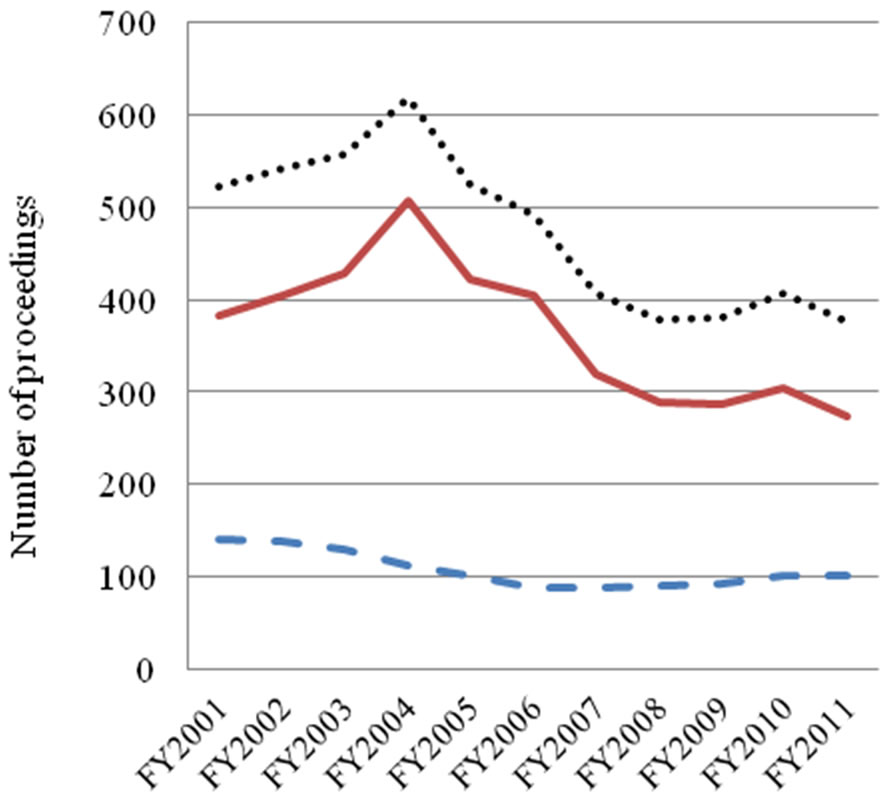
Figure 2. Number of proceedings by fiscal year. Blue dot line: number of proceeding of Japan waste management association; red bold line: number of proceeding of Japan society of material cycles and waste management, black dot line: total number of proceedings.
proceedings reached its peak when it exceeded 600 in 2004, and its minimum was less than 400 in 2011, a reduction of 40%. The reason for the 2004 peak could be related to the “3R Initiative” proposed by then Japanese Prime Minister Jun’ichiro Koizumi at the 30th G8 summit held in Sea Island, the USA.
3.2. Research Trends by Fiscal Year
Research trends by fiscal year are shown in Figures 3-13. By evaluating the total number of proceedings throughout the decade, it was found that the five significant research projects performed were, “The study & management of a final waste disposal site,” “Waste facility management,” “Waste treatment technology development,” “Study on waste management,” and “Waste recycling & management.”
The “Study on waste management” was the most extensively conducted research and showed the largest proceedings of seven out of eleven consecutive fiscal years (2001, 2003, 2004, 2007, 2008, 2009, and 2011). “Waste facility management,” “Waste treatment technology development,” and “Waste recycling & management” fell into the second most intensive research group and “Waste facility management” was the least intensive research of the five projects.
3.3. Intensive Trends of Each Research Project by Fiscal Year
The intensive trends of each research project are summarized by intensive level (Table 2). Four levels were
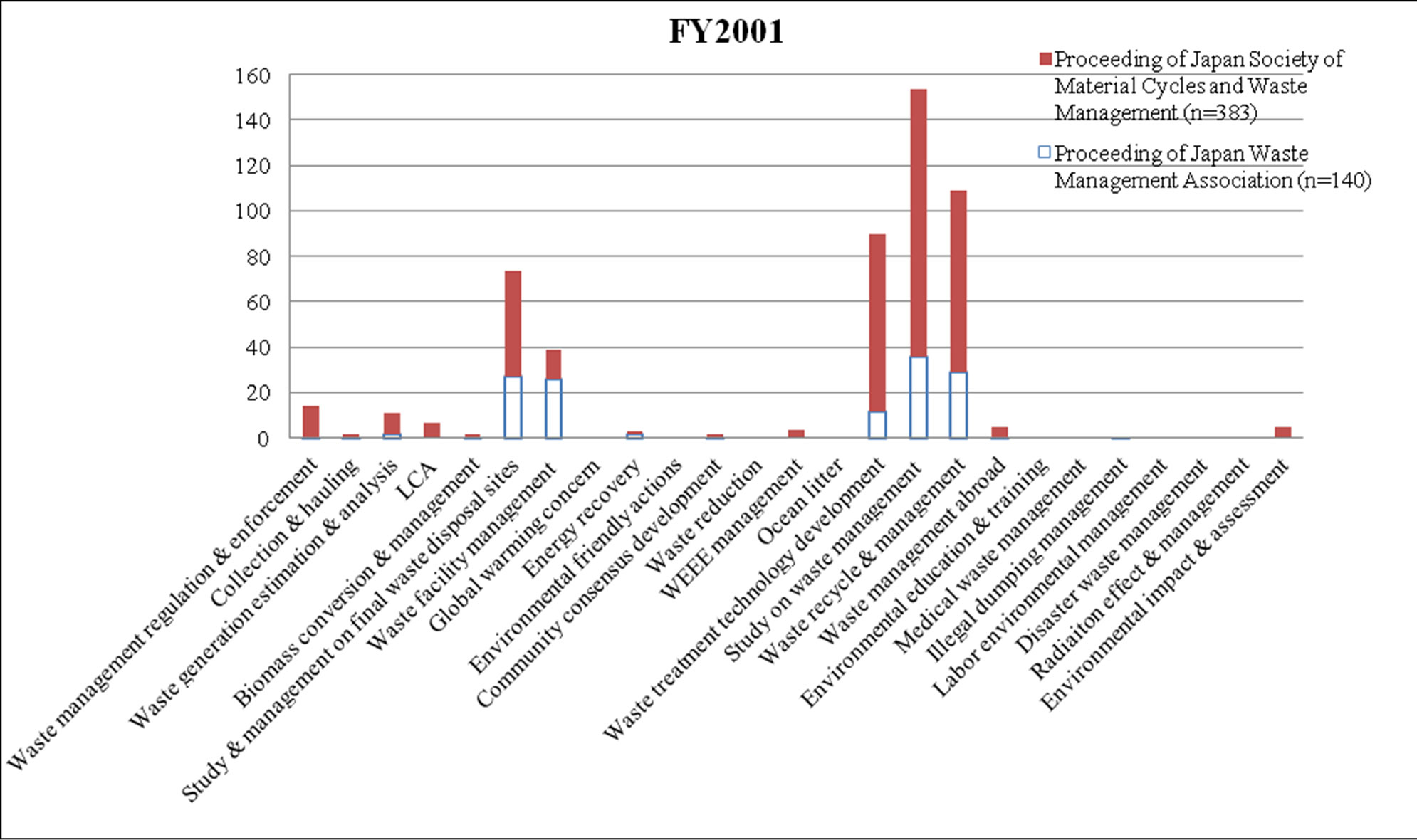
Figure 3. Number of proceedings in FY2001.

Figure 4. Number of proceedings in FY2002.
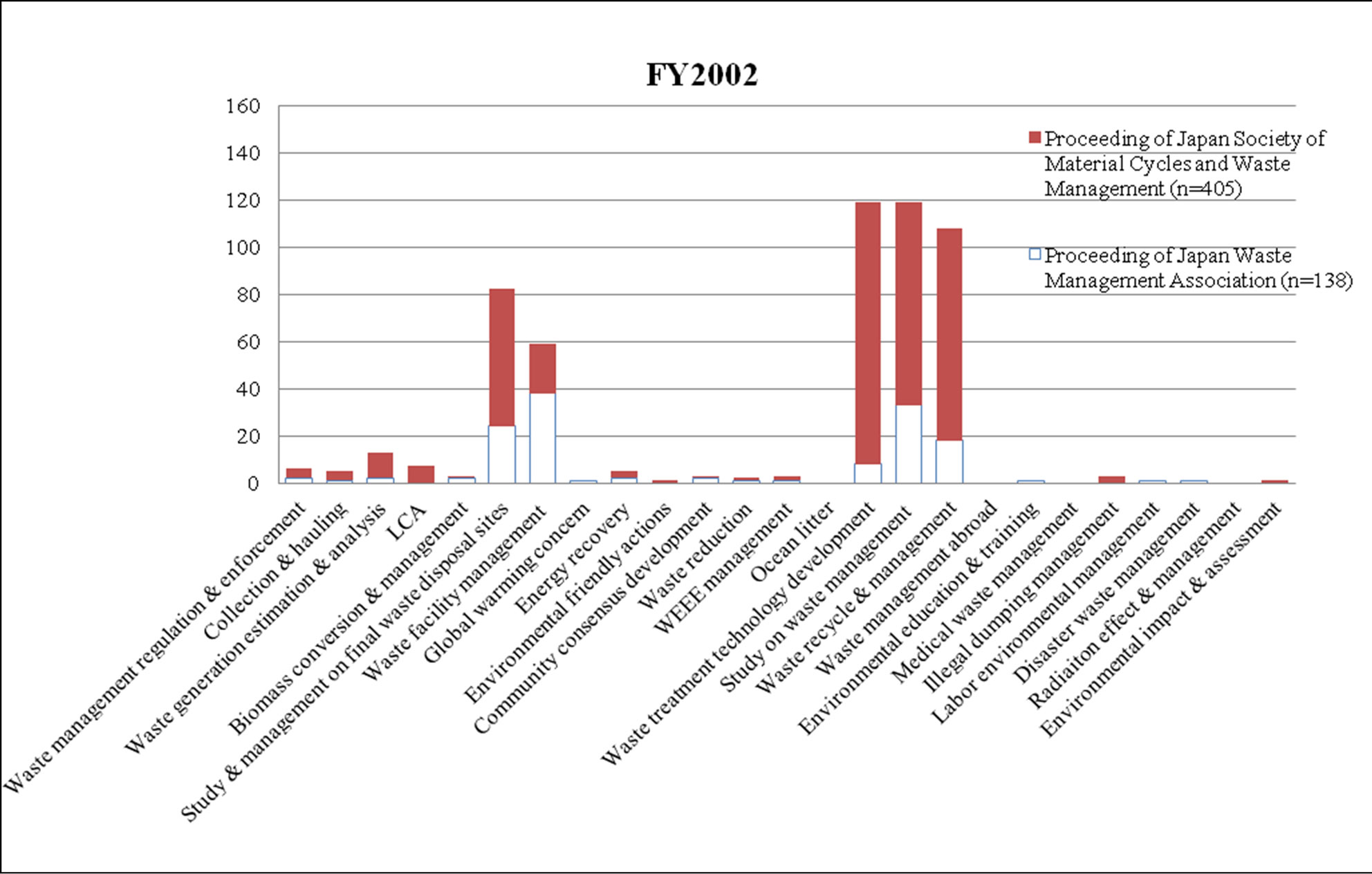
Figure 5. Number of proceedings in FY2003.
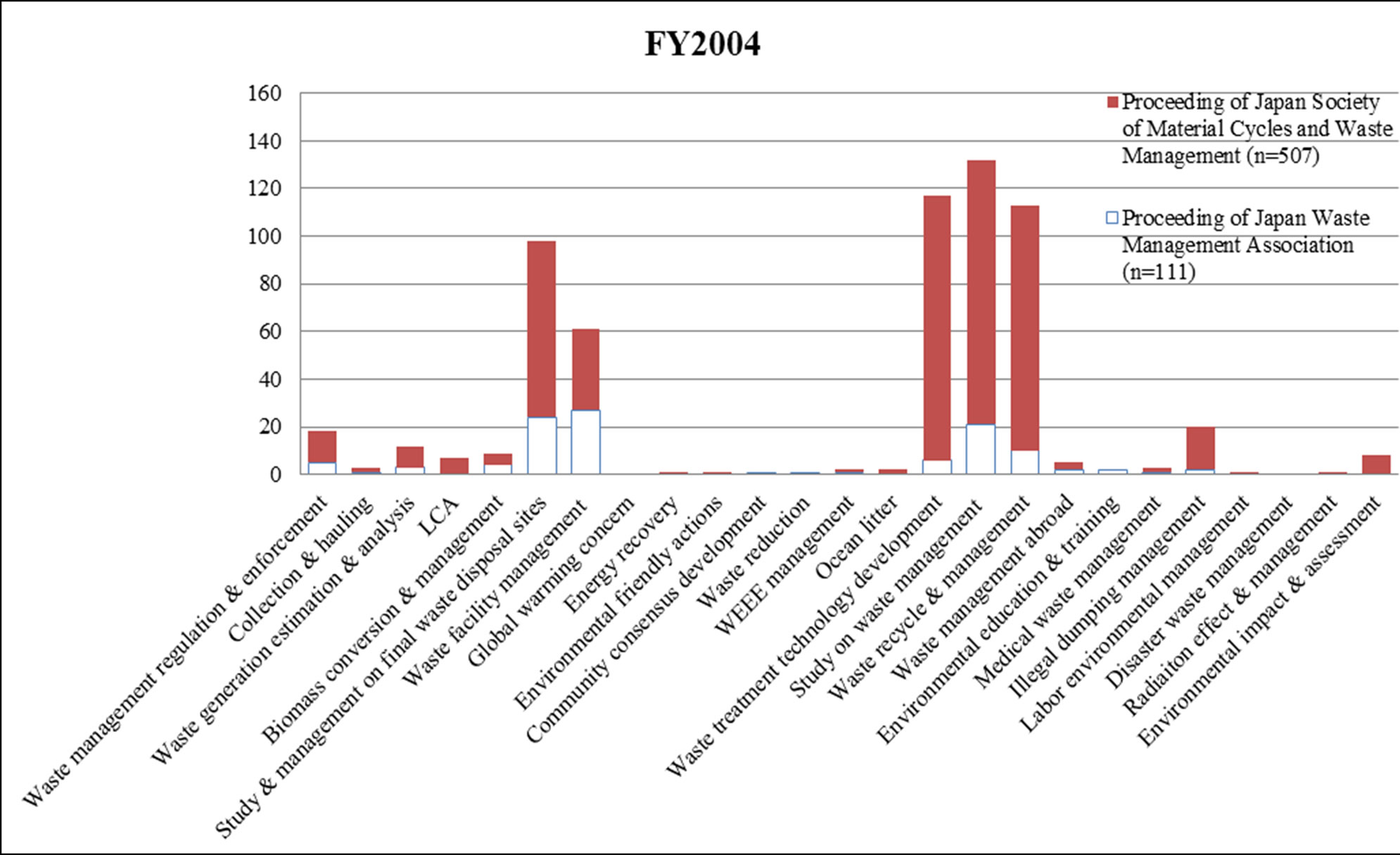
Figure 6. Number of proceedings in FY2004.
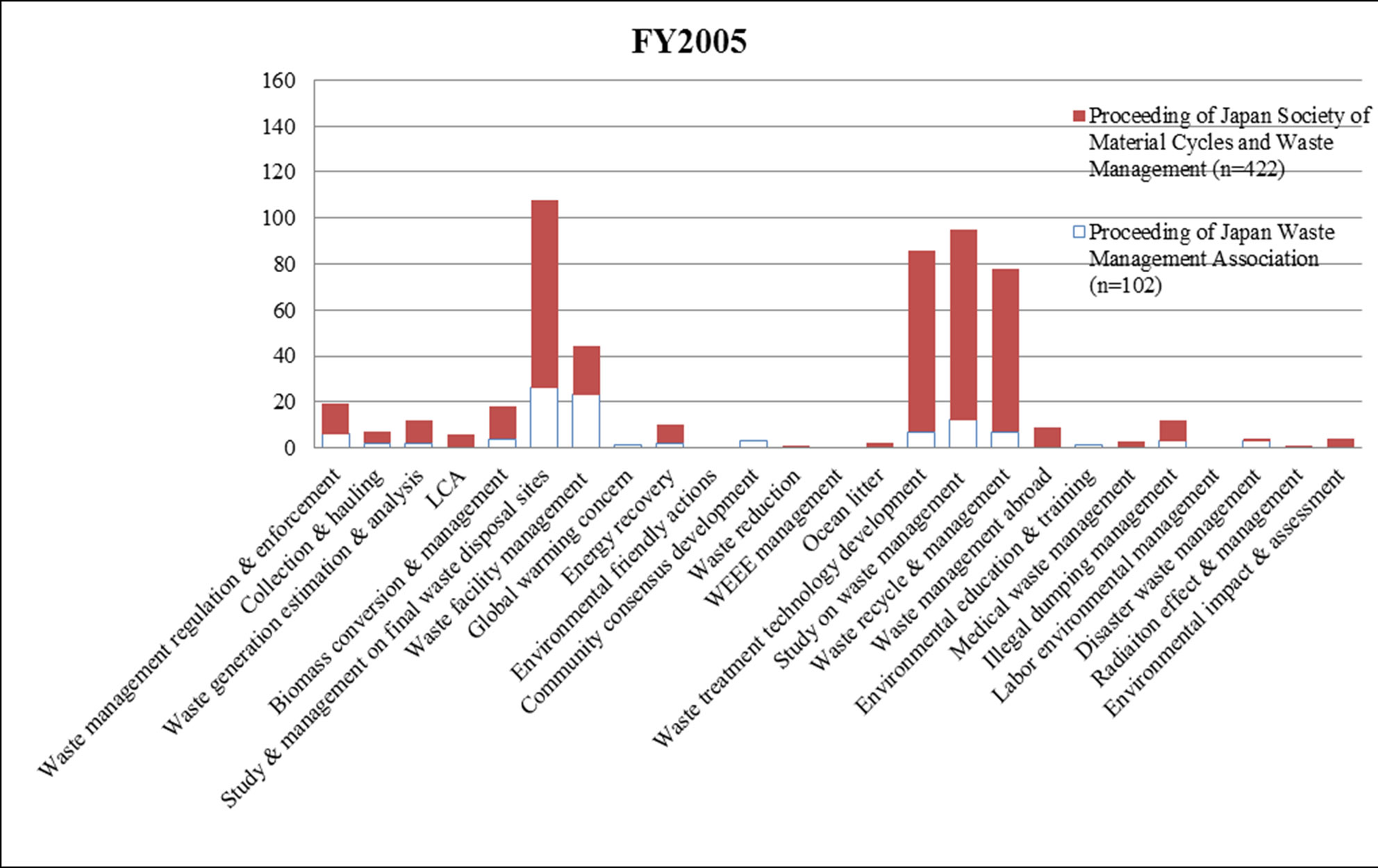
Figure 7. Number of proceedings in FY2005.
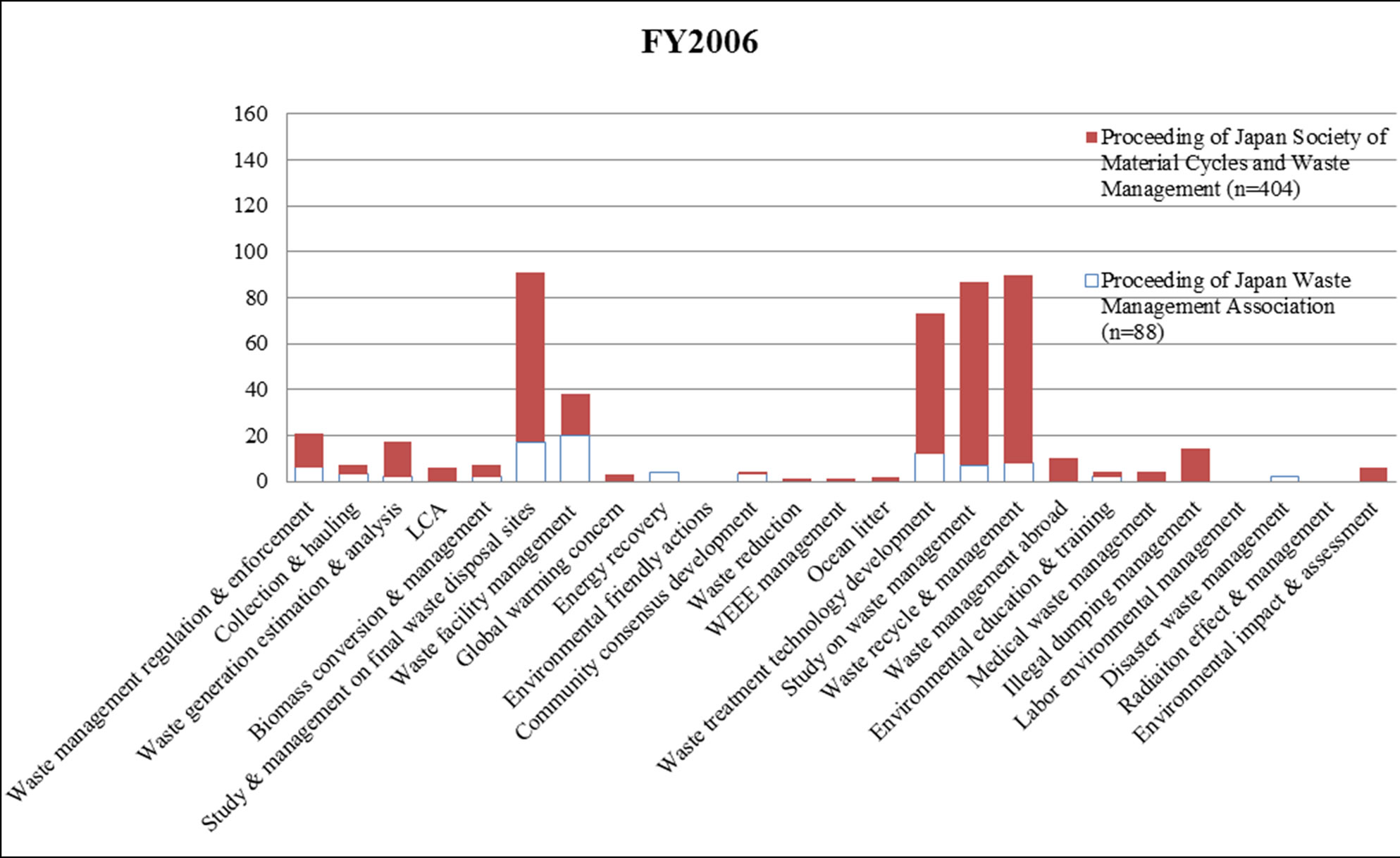
Figure 8. Number of proceedings in FY2006.

Figure 9. Number of proceedings in FY2007.
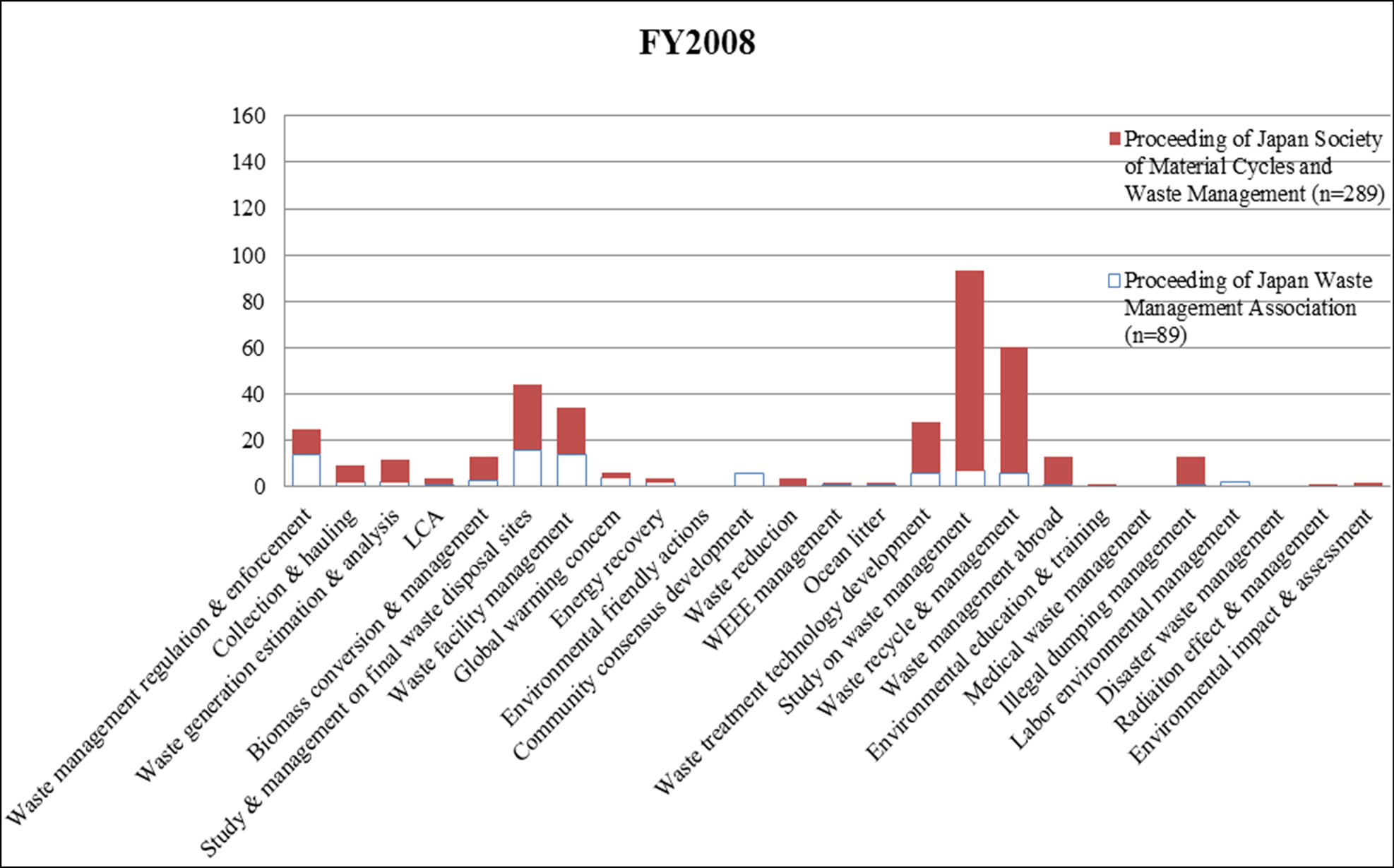
Figure 10. Number of proceedings in FY2008.
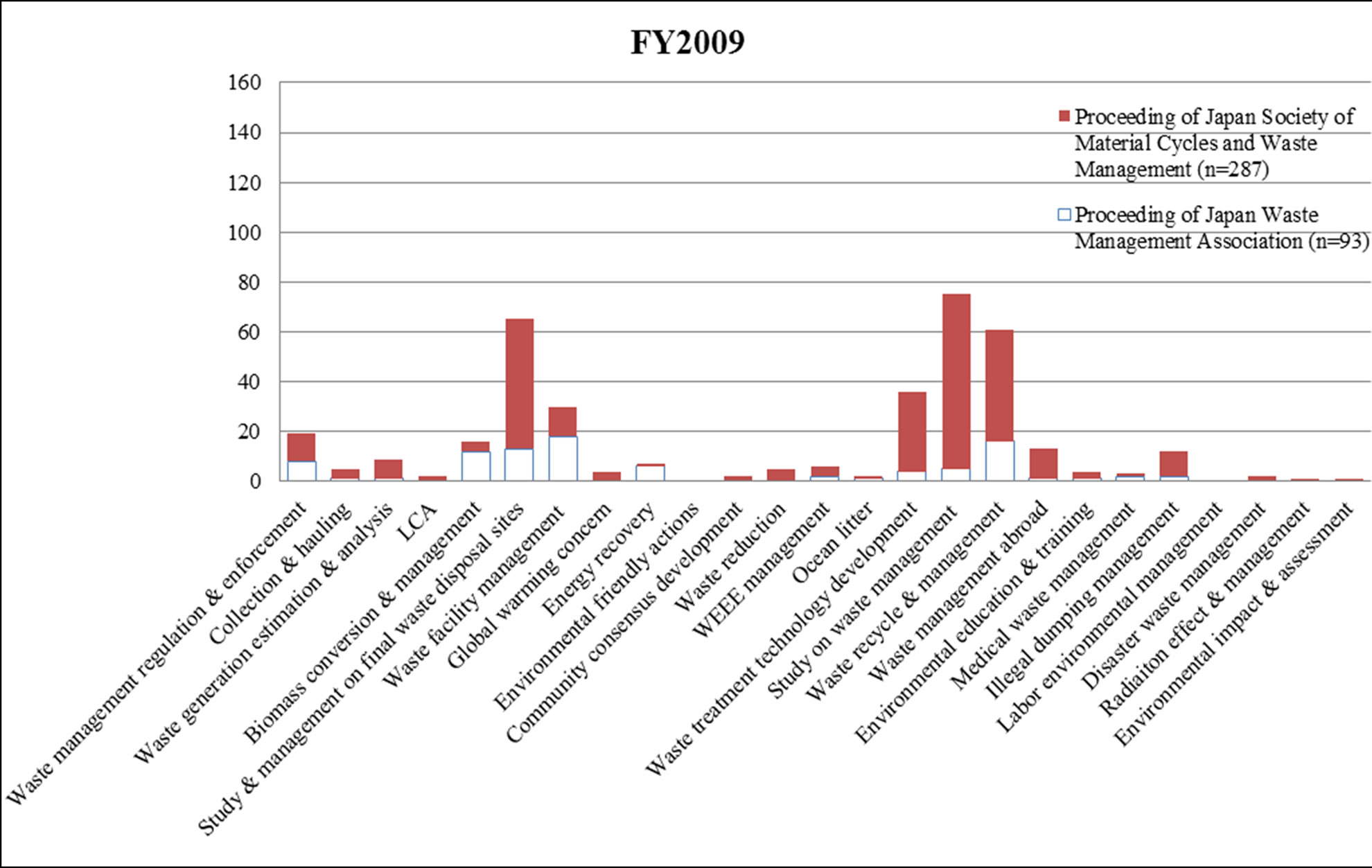
Figure 11. Number of proceedings in FY2009.
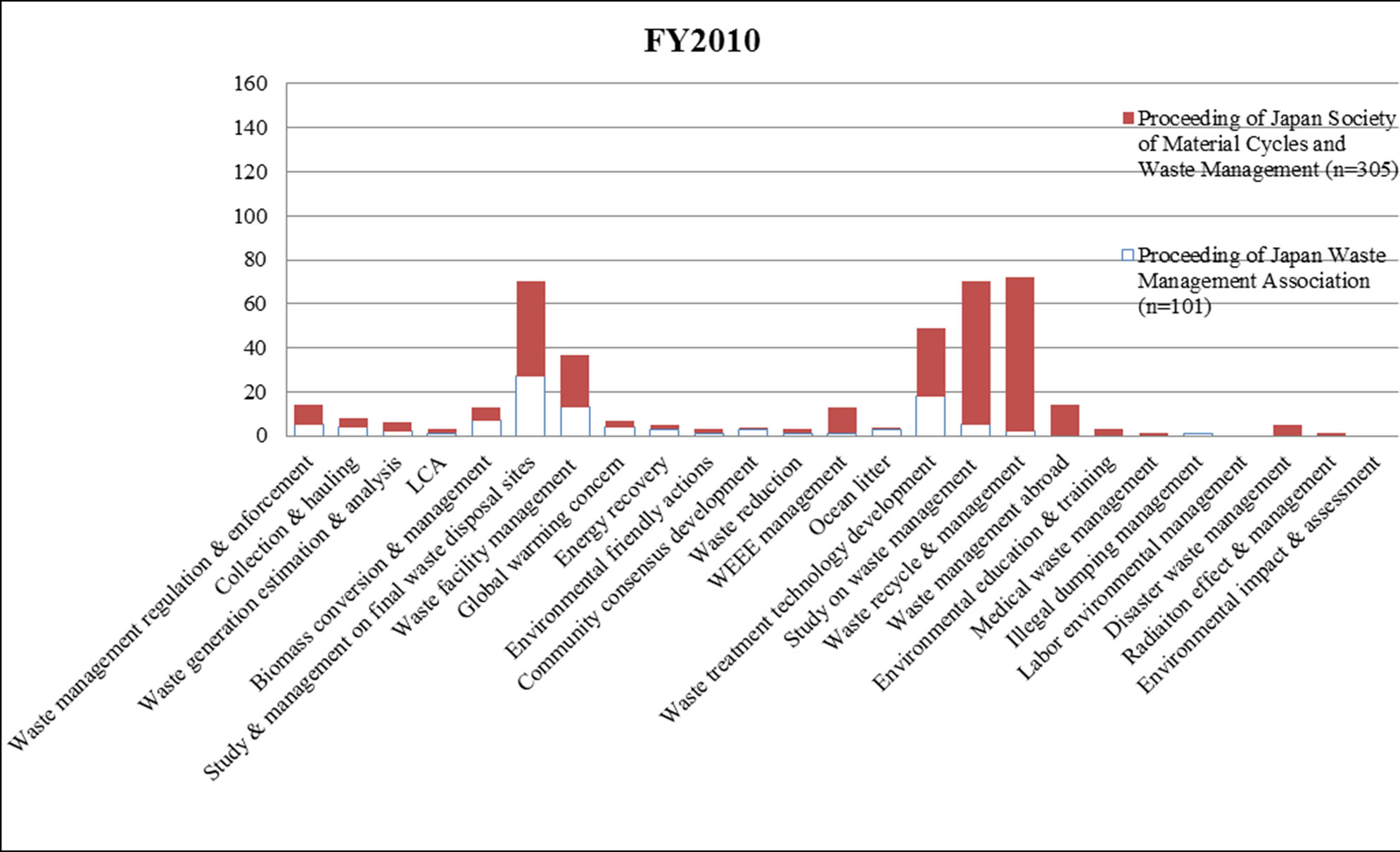
Figure 12. Number of proceedings in FY2010.
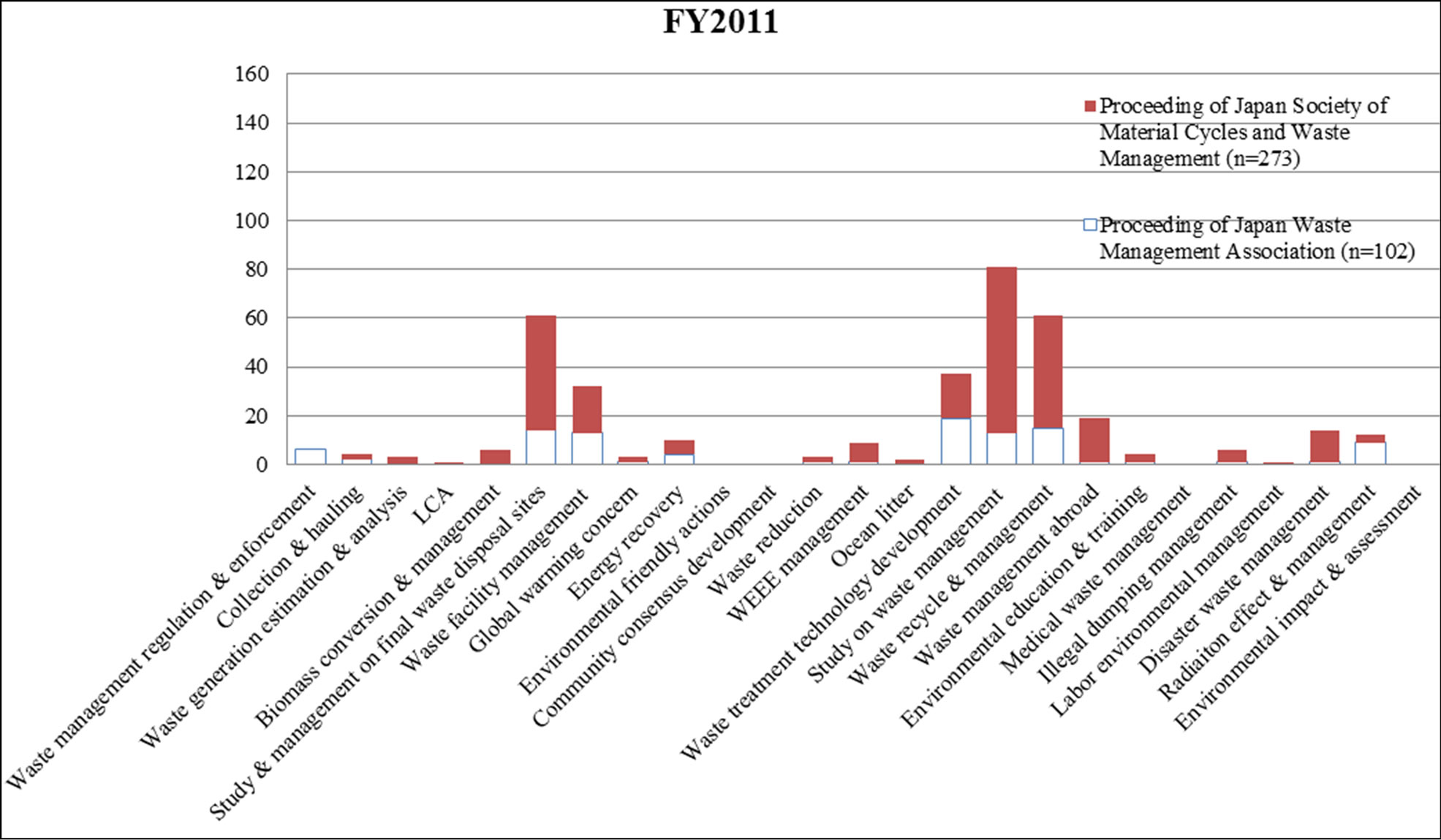
Figure 13. Number of proceedings in FY2011.
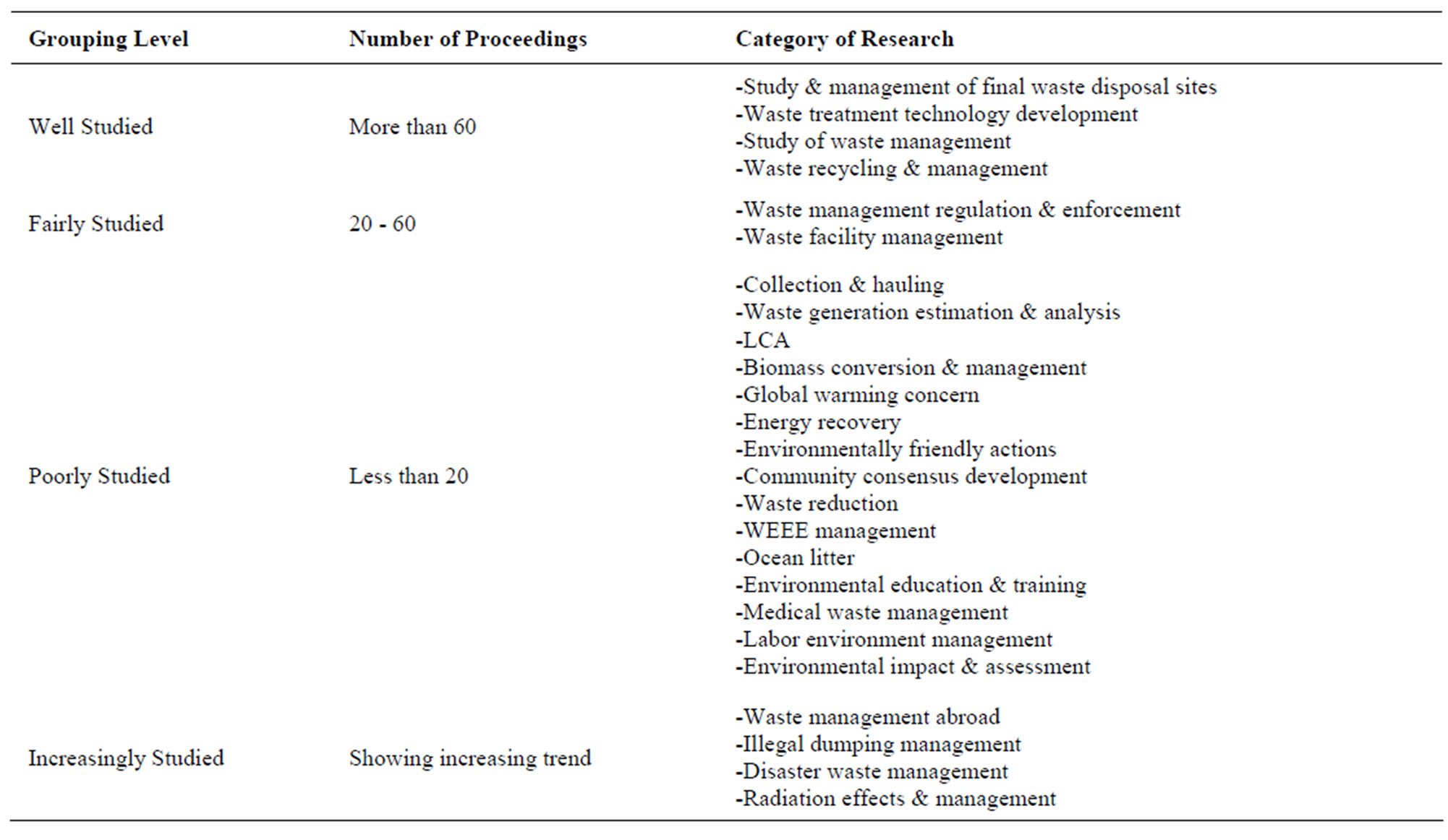
Table 2. Grouping of research by intensive level.
established to categorize the projects: Well Studied, Fairly Studied, Poorly Studied, and Increasingly Studied.
The total number of proceedings was used to decide these levels of intensity. Research fell into the category of Well Studied if its number of proceedings exceeded more than 60, Fairly Studied if the range was between 20 and 60, and Poorly Studied if the proceedings were fewer than 20. The standard for number of proceedings was not strictly applied here. Research was classified as Increasingly Studied if it showed an increasing trend and if the number of proceedings not considered for this grouping. According to the table, four research categories were grouped into Well Studied, two into Fairly Studied, fifteen into Poorly Studied, and four into Increasingly Studied.
The results show that research on final waste disposal sites, recycling and treatment technology development, and waste management has been conducted intensively in Japan. Fifteen studies out of twenty-five, on the other hand, were grouped into Poorly Studied. Collection & hauling (Figure 14(a)) fell into the Poorly Studied category. Waste is usually collected and transported to waste treatment plants, therefore, collection and hauling is very important scheme to be studied. And yet, it seems that in Japan, this is not believed to be the case.
LCA (Life Cycle Assessment, Figure 14(b)) is an important method that can determine whether or not recycling is truly good for the environment. As mentioned earlier, waste recycling & management was categorized into Well Studied, but LCA, the method with which to evaluate recycling, was categorized as Poorly Studied. Observing this fact, it could be said that waste recycling research in Japan is unbalanced.
The research category of biomass conversion & management (Figure 14(c)) concerns renewable energy from organic waste, including the use of biomasses such as biogas production and hydrogen production. The energy recovery category includes research on energy recovery from waste incineration plants, the production of biogas, and electricity generation from waste. The research category of global warming concern (Figure 14(d)) includes research on CO2 emissions from waste incineration plants, greenhouse gases from urban areas, greenhouse gas emissions from final waste disposal sites, and so on. In 1997, Japan initiated the Kyoto Protocol to combat global warming. Despite the Protocol, the research described above, which was closely related to the Protocol, was classified under Poorly Studied. The results show that that Kyoto Protocol was not a serious issue in the waste field.
Waste reduction (Figure 14(e)) was also categorized as Poorly Studied. Prior processes of waste treatment such as waste reduction, collection, and transportation are not considered to be important processes in Japan.
The research categories of community consensus development (data not shown), environmental education & training (data not shown), and labor environmental management (data not shown) consist of research that accounted for people who were concerned with matters of waste. Since all of these categories fell into the Poorly Studied group, it is obvious that “research on the citizens, students, and workers in the waste field” is treated extremely lightly. Research still places a heavy stress on the materials rather than the actual people involved. Tateda [37] has stressed the importance of taking care of those who work in the waste field, because, after all, the treatment and management of waste is done by people, no matter what kinds of machines may be involved.
The category of waste management abroad (Figure 14(f)) increased drastically in the FY2005 and gradually increased until FY2011, which means that Japanese researchers have opened their eyes to foreign countries, and have begun to conduct international research, mainly in Asian countries such as China, Thailand, and Vietnam.
As previously mentioned, as a result of the earthquake and tsunami that occurred in March of 2011, Japan has had to face a tremendous amount of disaster waste and its accompanying waste management problems. In addition to the issue of waste management, the management of radioactive waste has suddenly become a central issue for the Japanese government. The current means for managing disaster and radioactive waste is neither stable nor reliable. It is easy to understand why this situation exists, as Japan has lacked both research and experience, until now. There has been almost no research conducted in these areas. As a matter of fact, radioactive waste is excluded as waste in Figure 1, which means that radioactive waste is out of control in Japan Waste Management Law. This might be one of reasons of virtually no research performance on radioactive waste. Trends in the figures showed a rapid increase in 2011 (no data shown), but those studies were apparently performed after the tsunami. As a result, it is clear that Japan has not been able to deal effectively with the waste generated by those events.
Why the above-mentioned trend was formed? Researches must be original and, therefore, the kinds of researches that are conducted might be highly unexpected and no factors other than government research funds control the research trends. Figure 15 shows the trend followed by the researches selected by the Ministry of Environment for a government research fund.
These researches contributed to the formation of the environmental policy of Japan. It can be said that the trends shown in Figures 3-13 are very similar to that followed by the government-funded researches. Most of the recipients of government research funds present their research results at conferences mentioned Section 2.1; thus, it can be said that the coincidence of similarity in both these trends is natural. Consequently, research trends are actually governed by the ministry’s decisions. Hence, it can be said that the environmental policy mis-

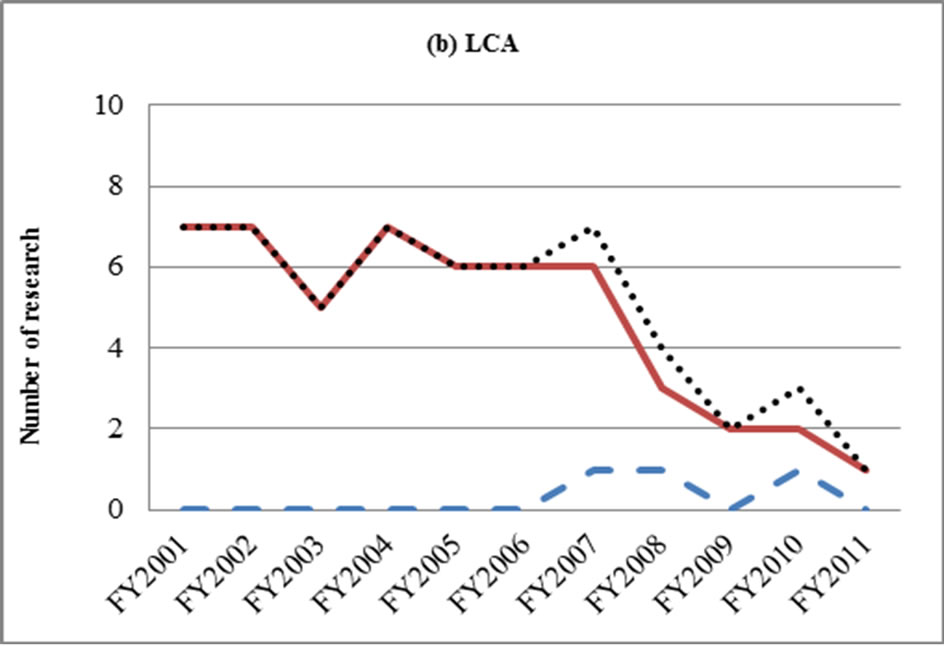
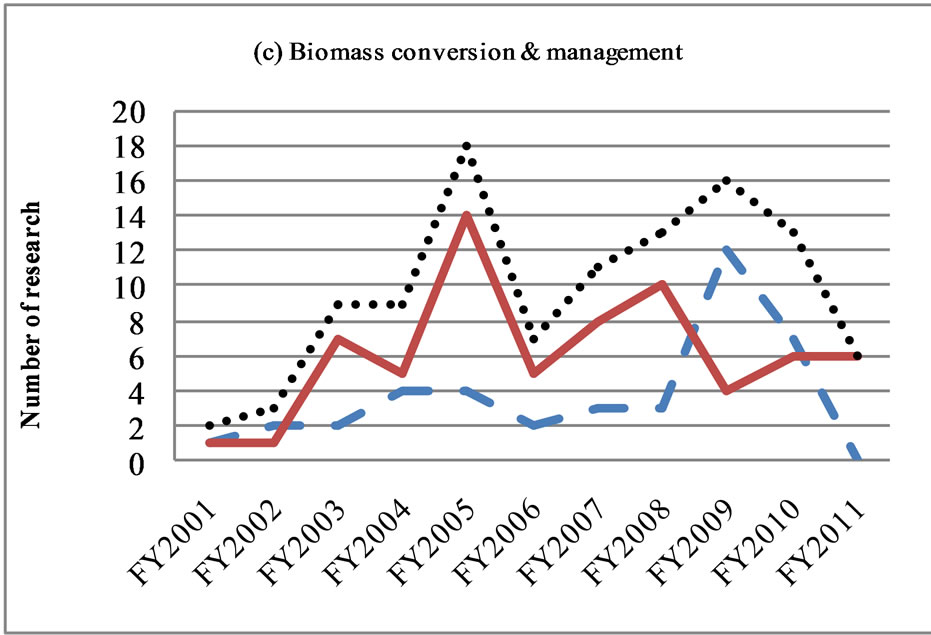
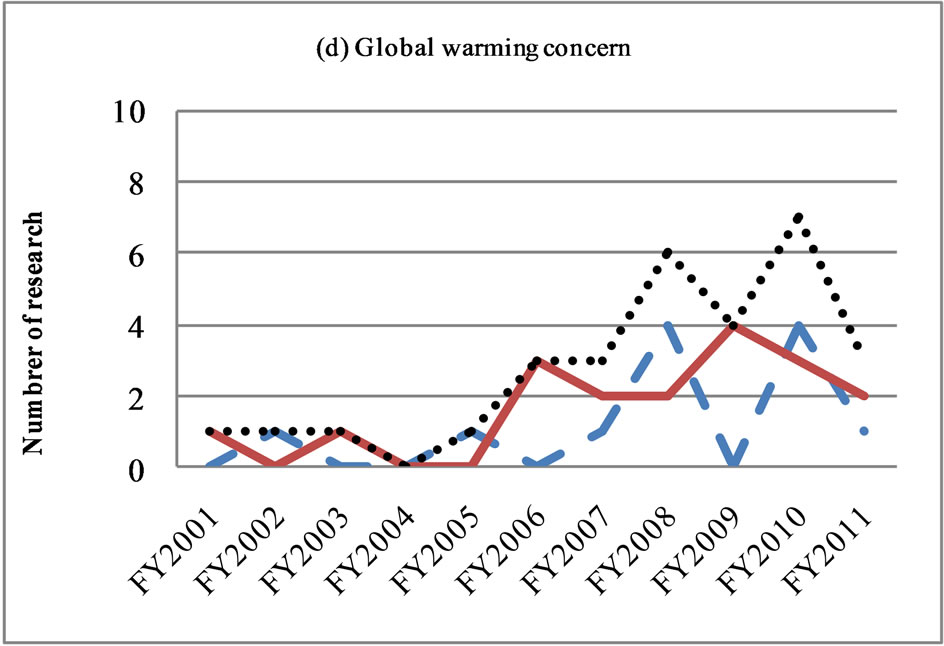
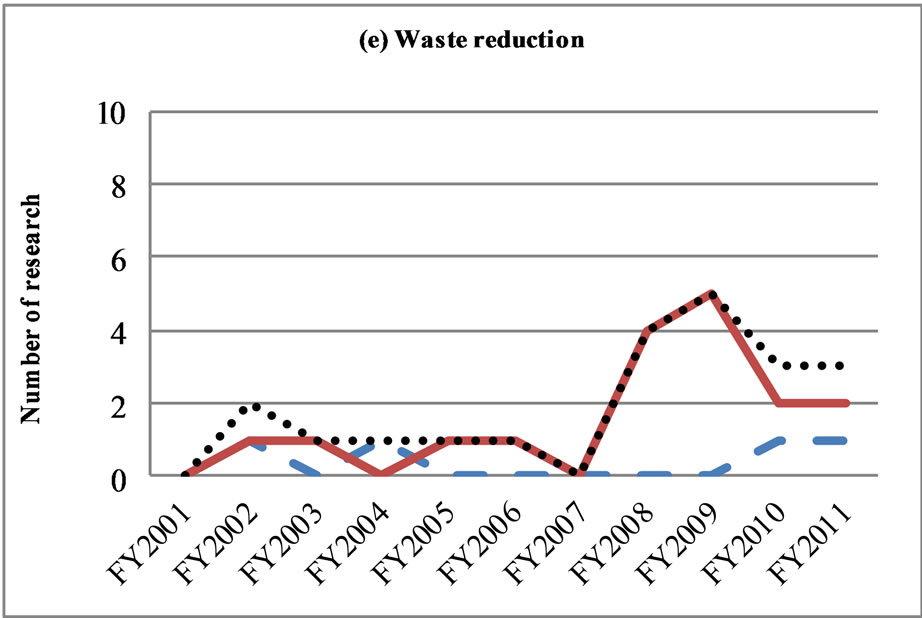
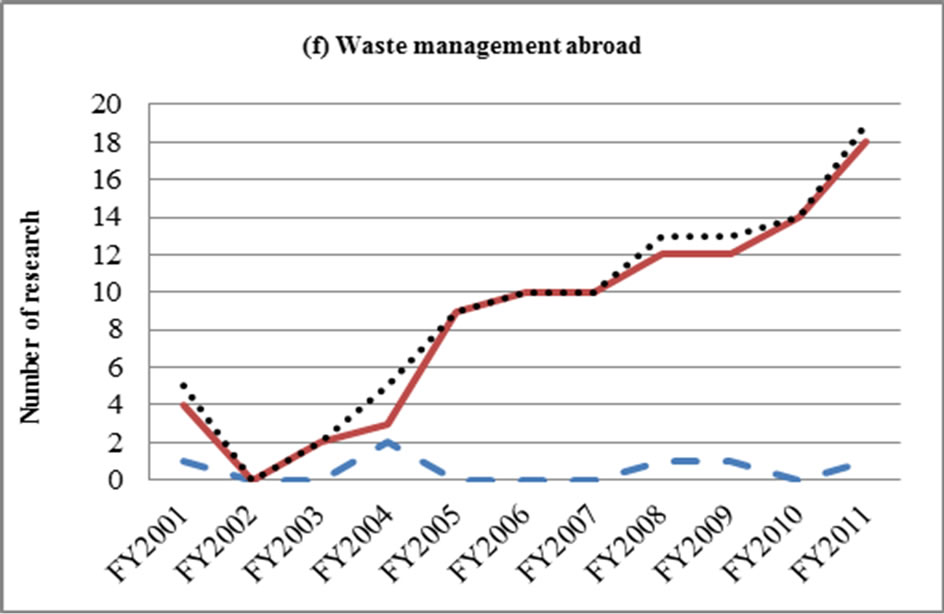
Figure 14. (a) Collection & hauling; (b) LCA; (c) Biomass conversion & management; (d) Global warming concern; (e) Waste reduction; and (f) Waste management abroad. Blue dot line: number of Proceeding of Japan Waste Management Association, red bold line: number of Proceeding of Japan Society of Material Cycles and Waste Management, black dot line: total number of proceedings.
management by the Japanese government affected the research performance neither positively nor strategically.
4. Conclusion
This study makes clear Japan’s waste research has been weak and unbalanced. We can therefore conclude that waste research has not been strategically conducted in Japan for the last decade. Japanese people visit shrines and conduct Shinto ceremonies for occasions such as the new year, weddings, and ground-breakings, however, they are basically unbelievers. They do not go to shrines every Sunday, but think rather that shrines and ceremonies are simply customs without religious significance. Typically, they are not as pious as Christians, Muslims, Jews, or other religious people. And yet, the Japanese believe somewhere in deep in their minds that God will
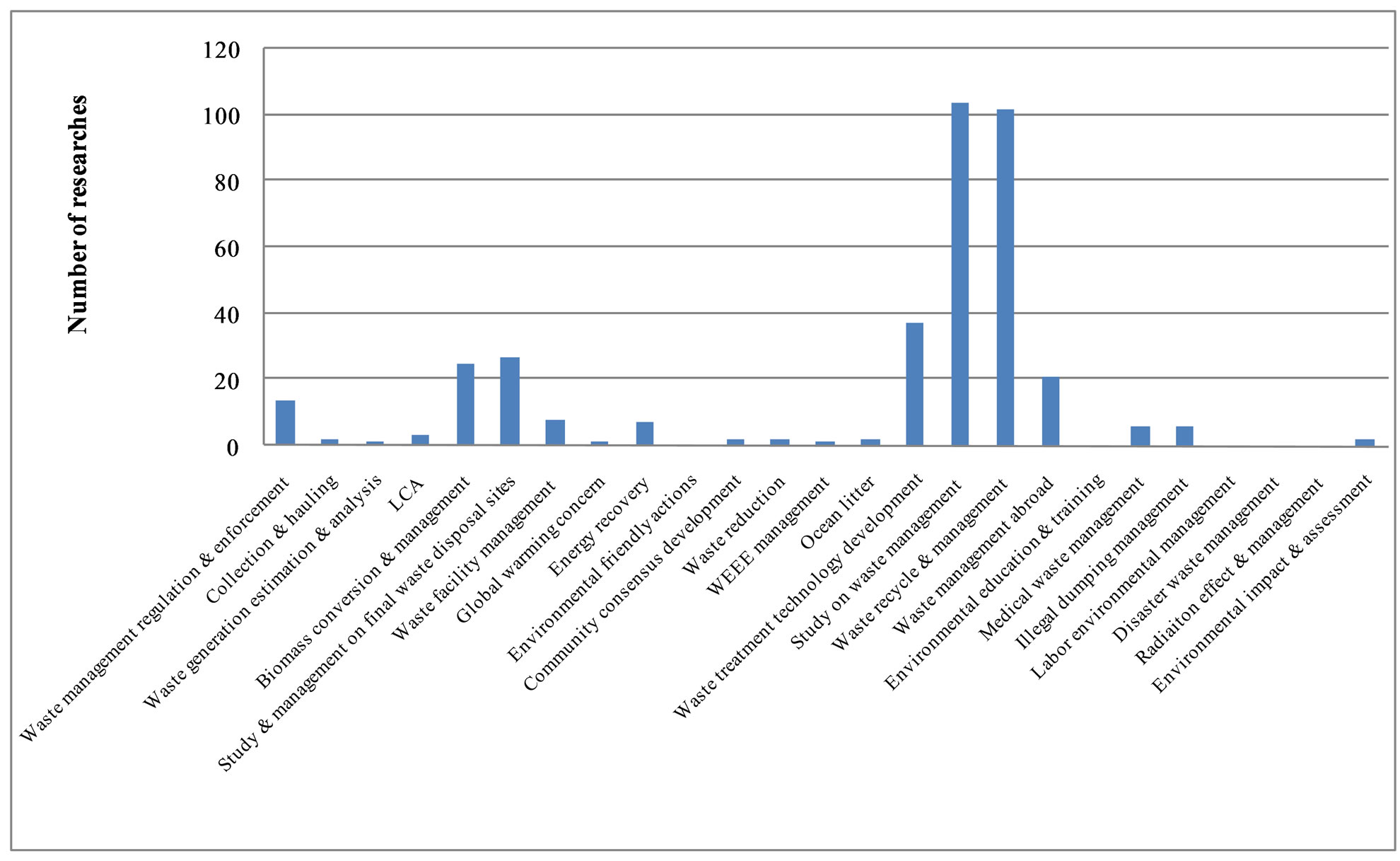
Figure 15. Selected research topics orientated by waste research fund of Ministry of Environment.
help them if something bad happens. Hence, they are not good at preparing strategically for disaster. As our analysis shows, the Japanese did not prepare any countermeasures against disaster and radioactive waste; they therefore have to change their way of thinking and plan strategically. There is no expert who specializes in disaster waste resulting from terrorist activities, including citizen uprising, in any Japanese university; Japan certainly needs such experts in the future. This is the moment for Japan and the Japanese people to change their national character. Such actions are the only ones the Japanese can take to help the victims of the earthquake, the tsunami, and the contamination resulting from the explosion of the Fukushima nuclear power plant in March of 2011. Balanced and strategic research that is able to anticipate the Japan’s future condition is absolutely necessary.
REFERENCES
- “Eco Report,” Nikkei Ecology, 2011, pp. 10-13.
- H.-Z. Fu, Y.-S. Ho, Y.-M. Sui and Z.-S. Li, “A Bibliometric Analysis of Solid Waste Research during the Period 1993-2008,” Waste Management, Vol. 30, No. 12, 2010, pp. 2410-2417. doi:10.1016/j.wasman.2010.06.008
- Proceeding of Annual Conference of Japan Society of Material Cycles and Waste Management, Japan Society of Material Cycles and Waste Management, 2001.
- Proceeding of Annual Conference of Japan Society of Material Cycles and Waste Management, Japan Society of Material Cycles and Waste Management, 2002.
- Proceeding of Annual Conference of Japan Society of Material Cycles and Waste Management, Japan Society of Material Cycles and Waste Management, 2003.
- Proceeding of Annual Conference of Japan Society of Material Cycles and Waste Management, Japan Society of Material Cycles and Waste Management, 2004.
- Proceeding of Annual Conference of Japan Society of Material Cycles and Waste Management, Japan Society of Material Cycles and Waste Management, 2005.
- Proceeding of Annual Conference of Japan Society of Material Cycles and Waste Management, Japan Society of Material Cycles and Waste Management, 2006.
- Proceeding of Annual Conference of Japan Society of Material Cycles and Waste Management, Japan Society of Material Cycles and Waste Management, 2007.
- Proceeding of Annual Conference of Japan Society of Material Cycles and Waste Management, Japan Society of Material Cycles and Waste Management, 2008.
- Proceeding of Annual Conference of Japan Society of Material Cycles and Waste Management, Japan Society of Material Cycles and Waste Management, 2009.
- Proceeding of Annual Conference of Japan Society of Material Cycles and Waste Management, Japan Society of Material Cycles and Waste Management, 2010.
- Japan Society of Material Cycles and Waste Management, Proceeding of Annual Conference of Japan Society of Material Cycles and Waste Management, 2011.
- Proceeding of Annual Conference of Japan Waste Management Association, Japan Waste Management Association, 2002.
- Proceeding of Annual Conference of Japan Waste Management Association, Japan Waste Management Association, 2003.
- Proceeding of Annual Conference of Japan Waste Management Association, Japan Waste Management Association, 2004.
- Proceeding of Annual Conference of Japan Waste Management Association, Japan Waste Management Association, 2005.
- Proceeding of Annual Conference of Japan Waste Management Association, Japan Waste Management Association, 2006.
- Proceeding of Annual Conference of Japan Waste Management Association, Japan Waste Management Association, 2007.
- Proceeding of Annual Conference of Japan Waste Management Association, Japan Waste Management Association, 2008.
- Proceeding of Annual Conference of Japan Waste Management Association, Japan Waste Management Association, 2009.
- Proceeding of Annual Conference of Japan Waste Management Association, Japan Waste Management Association, 2010.
- Proceeding of Annual Conference of Japan Waste Management Association, Japan Waste Management Association, 2011.
- Proceeding of Annual Conference of Japan Waste Management Association, Japan Waste Management Association, 2012.
- Ministry of Environment, “Environment Research and Technology Development Fund FY2000,” 2000. http://www.env.go.jp/policy/kenkyu/suishin/kadai/kadai_ichiran/12nendo.html
- Ministry of Environment, “Environment Research and Technology Development Fund FY2001,” 2001. http://www.env.go.jp/policy/kenkyu/suishin/kadai/kadai_ichiran/13nendo.html
- Ministry of Environment, “Environment Research and Technology Development Fund FY2002,” 2002. http://www.env.go.jp/policy/kenkyu/suishin/kadai/kadai_ichiran/14nendo.html
- Ministry of Environment, “Environment Research and Technology Development Fund FY2003,” 2003. http://www.env.go.jp/policy/kenkyu/suishin/kadai/kadai_ichiran/15nendo.html
- Ministry of Environment, “Environment Research and Technology Development Fund FY2004,” 2004. http://www.env.go.jp/policy/kenkyu/suishin/kadai/kadai_ichiran/16nendo.html
- Ministry of Environment, “Environment Research and Technology Development Fund FY2005,” 2005. http://www.env.go.jp/policy/kenkyu/suishin/kadai/kadai_ichiran/17nendo.html
- Ministry of Environment, “Environment Research and Technology Development Fund FY2006,” 2006. http://www.env.go.jp/policy/kenkyu/suishin/kadai/kadai_ichiran/18nendo.html
- Ministry of Environment, “Environment Research and Technology Development Fund FY2007,” 2007. http://www.env.go.jp/policy/kenkyu/suishin/kadai/kadai_ichiran/19nendo.html
- Ministry of Environment, “Environment Research and Technology Development Fund FY2008,” 2008. http://www.env.go.jp/policy/kenkyu/suishin/kadai/kadai_ichiran/20nendo.html
- Ministry of Environment, “Environment Research and Technology Development Fund FY2009,” 2009. http://www.env.go.jp/policy/kenkyu/suishin/kadai/kadai_ichiran/21nendo.html
- Ministry of Environment, “Environment Research and Technology Development Fund FY2010,” 2010. http://www.env.go.jp/policy/kenkyu/suishin/kadai/kadai_ichiran/22nendo.html
- Ministry of Environment, “Environment Research and Technology Development Fund FY2011,” 2011. http://www.env.go.jp/policy/kenkyu/suishin/kadai/kadai_ichiran/index.html
- M. Tateda, “Identifying the Fundamental Key to Improving the Social Status of Waste Management Workers by Examining the History of Nursing,” Environmental Practice, Vol. 10, No. 2, 2008, pp. 66-74. doi:10.1017/S1466046608080101

